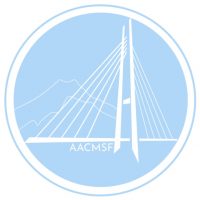Evaluation & treatment of urticaria and angioedema
Incidence
~20% of the population experience 1 or more episodes during their lifetime.
| Urticaria + Angioedema | 50% |
| Urticaria alone | 40% |
| Angioedema | 10% |
Definition
1) Acute: <6 weeks
2) Chronic: >6 weeks
Immunopathology
1) Dilated venule and dermal edema
2) Nonnecrotizing perivascular mononuclear infiltrate (mast cells, T lymphocytes, monocyte, major basic protein=eosinophil)
3) Urticaria: changes in superficial dermis
4) Angioedema: changes in deep dermis and subcutaneous tissue
5) Vasculitic urticaria: necrotizing venulitis with fibroid necrosis and neutrophilic infiltrate
Classification and etiologic factors
I. Immunologic
A. Type I: IgE-mast cell mediated
- Foods: fish, shellfish, nuts, eggs, milk
- Drugs: especially PCN, sulfonamides
- Stinging insects: especially hymenoptera (Bee)
- Animal dander and saliva
- Occupational exposure: Latex
B. Type II: cytotoxic Ab-IgG, IgM
- Complement activation with C3a and C5a as anaphylatoxin
- Transfusion reaction
C. Type III: Immune complex
- Complement activation
- Serum sickness (drugs), persistent infection (hepatitis B, mononucleosis)
II. Anaphylactoid (no antigen-antibody involvement)
A. Hereditary Angioedema
- Genetic: Autosomal dominant
- Clinical manifestation
- Types
- Mechanism: unregulated activity of protease enzymes (Kallikrein and C1s) leads to the production of mediators (bradykinin, C2 kinin) which cause increased local vascular permeability and exudation of edema fluid
- Laboratory evaluation
- Treatment
a) Nonpruritic, painful edema in any part of the body (facial swelling, laryngeal edema, abdominal pain, radiographic evidence of thumbprinting GI tract—mucosal mesenteric edema, extremities, genitalia)
b) HA, hemiplegia, seizure
c) No urticaria
d) Frequently triggered by trauma: Surgery
e) High mortality b/o laryngeal edemaa) Type I: 80%, low C1 inhibitor
b) Type II: 20%, normal or elevated C1 inhibitor, non-functional C1 inhibitora) C4: low during asymptomatic period and undetectable during attacks
b) C2: normal between attacks and low during attacks
c) C1: >50% of normal level
d) C1 INH: low by quantity in Type I, low by function in Type II.a) Acute attacks
(1) Epinephrine, antihistamine, and steroid just in case it is anaphylaxis (should not work for Hereditary Angioedema)
(2) Intubation, tracheostomy
(3) Epsilon-aminocaproic acid (Amicar) 8 g first four hours and 16g/d : helpful in ameliorating progression of the attack
(4) FFP: theoretical risk of worsening the acute attack by supplying complement
(5) Purified C1 INH, used in Europe and in research setting in US, but not commercially available
b) Maintenance
(1) Epsilon-aminocaproic acid
(a) DOC for children requiring long term treatment
(b) Decreases severity but not frequency
(c) Side effects: muscle weakness, myalgia, vascular thrombosis, myonecrosis, postural hypotension(2) Androgen
(a) Increases normal C1 INH production
(b) Side effects: menstrual irregularities, virilization, hepatic dysfunction, weight gain, myalgia, headache, decreased growth rate in children (the reason why androgen is not the DOC for children with this condition)
(c) Danazol (Danocrine) 200 mg bid or tid and taper
(d) Stanozolol (Winstrol) 2 mg tid and decrease to maintenance dose at 2 mg qd and taper slowly to 1 mg q week and then off based on clinical response(3) Purified C1 INH (not available yet)
(4) In general, most patients do not require long term prophylaxis; however, for those with frequent partial laryngeal obstruction or frequent incapacitating attacks, prophylactic treatment is recommended
c) Short term prevention (pre-op)
(1) Stanozolol 4 mg qid or Danazol 200 mg tid for 5 days before procedure or for 8 days in patients not receiving maintenance treatment
(2) FFP 2 unites the day before surgery and 2 unites just before procedure
(3) Purified C1 INH: future treatment
-
B. Acquired Angioedema
- Incidence: extremely rare, ~40 cases reported; after 4th decade of life
- Clinical manifestation: similar to Hereditary Angioedema
- Etiology
- Laboratory evaluation:
- Treat underlying cause and/or androgen
- Chemical mediator-releasing agents: radiocontrast, opiates, foods (strawberries, citrus, tomatoes), muscle relaxants, quinine, polymyxin.
- ASA, NSAID via arachidonic acid metabolism
a) B cell lymphoproliferative disorder
b) Connective tissue disease (lupus)
c) Autoantibody to C1INH
a) Similar to Hereditary form (low C1 INH level and C4)
b) C1<10% normal (dissimilar to Hereditary Angioedema)
III. Physical Urticaria and Angioedema
- Dermatography: stroking skin
- Cold urticaria: ice cube test
- Cholinergic (heat) urticaria
- Localized heat urticaria
- Exercise induced urticaria (anaphylaxis):may be also associated with food intake before exercise
- Solar urticaria
- Pressure urticaria and angioedema
- Vibratory angioedema
- Aquagenic urticaria: tap water challenge
- Incidence: 2-20% of chronic urticaria
- Etiology: hepatitis B, serum sickness, collagen vascular disease,mononucleosis
- Manifestation: lesion longer than 24 hours, petechiae or purpura may appear, residual pigmentation, angioedema pruritic or painful lesions, associated arthralgia and arthritis
- Lab: hypocomplementemia, elevated ESR, skin biopsy
- Urticaria pigmentosa: skin biopsy, Darier’s sign
- Systemic mastocytosis:
- Infections: parasite, viral URI especially in children, syphilis, sinusitis,etc
- Malignancy
- Endocrine: hyperthyroid, hypothyroid, pregnancy, menopause
- Amyloidosis: associated with nerve deafness, limb pain
1. occurs following heat exposure, exercise, emotion
2. test: methacholine skin test, exercise challenge
IV. Urticaria Vasculitis
V. Miscellaneous
1. Mast cells in dermis, bone marrow, and GI tract
2. Flushing, HA, hypotension, dues to histamine, diarrhea, PUD, abdominal pain, N/V, pathologic fractures
3. Bone marrow biopsy
VI. Autoimmune urticaria/angioedema (40% of all cases): autoantibody against the endogenous IgE or the IgE receptors
VII. Idiopathic urticaria and angioedema: most common, about 40% of cases
Diagnosis
1) History and physical examination (most important) keeping the above classification and etiology in mind
2) Routine lab not helpful in patients with acute urticaria and angioedema unless H&P point to a specific diagnosis
3) ESR, CBC with diff, LFT, SMA6, HepBsAg, RPR, UA as screening in chronic cases and others based on H&P
Management
I. Identification and removal of precipitating cause
II. H1-receptor antagonist
III. Combination H1 & H2 receptor antagonist
IV. Rare use of systemic steroid
